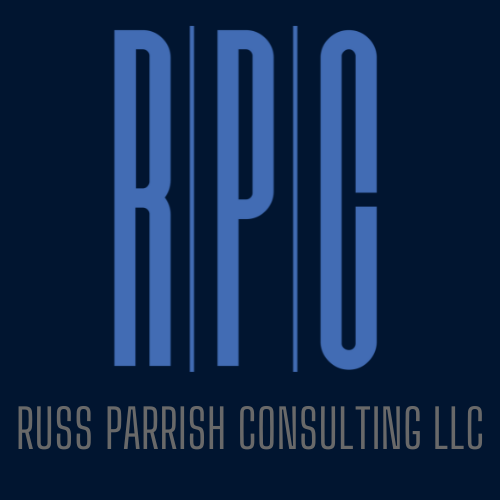Four Areas Needed to Build A Solid Maintenance and Reliability Program
"What do I need to do to improve my maintenance and reliability program?"

“What do I need to do to improve my maintenance and reliability program?” is our most commonly asked customer question. There are a myriad of ways to answer that question and some are customer or industry specific. This month we are reviewing Ryan Chan’s book, Asset Operations – Maintenance, Reliability and Operations in the Era of Artificial Intelligence, in the September Common Sense Reliability Newsletter. The book, along with the understanding of the eight pillars of asset management defined in it, are a great supplement to this month’s topic. At Russ Parrish Consulting (RPC), we believe there are four areas of concentration needed to build a solid foundation for maintenance and reliability. The four areas that will be explored are:
1. Do the basic foundational maintenance and reliability requirements well.
2. Operate in a data driven and proactive decision making manner.
3. Embrace innovation and technology.
4. Invest in your employees.
Most of us are inheriting a maintenance and reliability system and we will center this discussion around those existing platforms. If one is lucky enough to create something from the ground up, we would use a “design for reliability” method and all the items we discuss here would need to be a part of this method as well. First, we need to determine our starting point by performing an assessment. This is a line in the sand moment and all forward movement will be measured against it. Not every item in the area write-ups will be listed; however, several examples will be given of each.
Area One: Do the Basic Foundational Maintenance and Reliability Requirements Well Once the initial assessment is complete and the starting point and opportunities are identified, the definition of success must be accurately established.
- Create a plan. This plan is our roadmap but it will need to be updated and adjusted as we move forward.
- Have documented processes, procedures, and checklists.
- Adhere to a strategic asset management plan (SAMP).
- Ensure all assets are entered into the system of record. For this discussion, we will assume use of a computerized maintenance management system (CMMS).
- Level of details for the assets should include standardized naming convention, name plate data, criticality, spare parts, condition, estimated life expectancy, maintenance plans, history, and more. The goal is to have all assets entered in the CMMS; this will be a continuous improvement activity to maintain 100%.
- Plan and schedule maintenance and repair activities. Ensure all planning, scheduling, technician work performed, and operations information is captured.
- Maintain an adequate and accurate backlog of work.
- Make certain maintenance, reliability, and operations (MRO) personnel operate together and are aligned to achieve common goals.
- Other items to consider: key performance indicators (KPI) to monitor; budgetary and spend items; and capital planning. Capture as much practical information in the CMMS as possible and have an “everything measured can be improved mentality.”
Area Two: Operate in a Data Driven and Proactive Decision Making Manner
It is said that data is the new gold or oil. The premise is that it is of immense value both in use and financial gain. Couple “good” data with a proactive way of doing business and there is a terrific opportunity to save time and money; thereby, increasing efficiency and gains. Let’s examine data and what will be needed to make these gains.
- Collect the right data, capturing the needed insights.
- Have a strict data plan and governance policy in place with good adherence.
- Use a single repository for all data and make it accessible from wherever needed. Not only is having clean and good data important but having access when needed is essential.
Next, let us define the standard for proactive vs reactive work. The baseline for world class proactivity is eighty-five percent proactive. This is the minimum ratio and the target to chase. Beyond that percentage, the benefit must outweigh effort, cost, and return - a fine line to maintain. The combination of the above data recommendations and achieving elevated levels of proactivity will enhance the information available, lead to better decision making capability, and produce improved results.
Area Three: Embrace Innovation and Technology
We live in an environment of quickly evolving technology and innovation. It is an exciting time to be in our industry, simultaneously, it is a challenging time. New software and technology systems, real time sensor information via IoT, digital twins, and others are constantly changing the maintenance and reliability landscape. Data changes made in Area Two provide the necessary groundwork to tackle Artificial Intelligence (AI) and all the opportunities provided by its implementation. To be successful, we need to choose wisely from the myriad of innovations currently available. Choices should bring value and make sense for our circumstances. Not every new product or procedure will be a good fit, we should be judicious in our approach. We must have a plan, train/hire the appropriate skill sets and employees; and adjust to new and greater things. Area Three will be a constant area of studying, learning, and evaluating as we move forward.
Area Four: Invest in Your Employees
It is said that a business’s greatest asset is its culture and its people. I agree and lean toward the people being most important. If the value of our human assets is that high then there should be a willingness to invest in our teams.
- Begin in the hiring process and all the tools exercised to get the correct resources hired - job descriptions, benefits packages, fair compensation, etc., are all key.
- Give new hires the resources necessary; positioning them and helping them to achieve success.
- Put forth effort to train the employee and continue to enhance their skill sets as equipment, technology, and innovation advance.
- Help employees to advance in their career path.
- Create and maintain an environment where the employees want to work and bring value - company culture is essential.
“What do I need to do to improve my maintenance and reliability program?” What needs to be done depends a great deal on where you are starting. Following a common sense approach and the steps outlined in this blog, you will be on the right trajectory. Additionally, ancillary improvements should also be noticed – enhanced safety, decreased downtime, improved asset performance, etc. Ultimately the goal is to get better each day and continuously improve to achieve the desired results. If you have any questions on what your next steps should be, please reach out to RPC. We would be happy to help.





